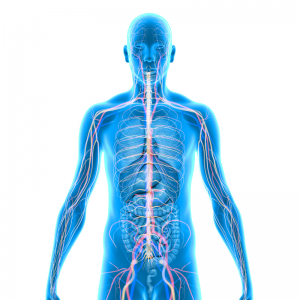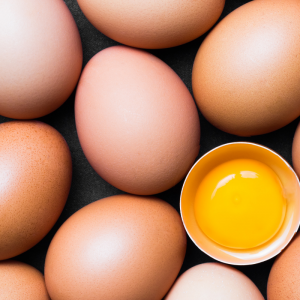 This month I thought I’d talk about what happens in vagus. No, that is not a typo. I don’t mean Vegas, the land of mega flashy casino-hotels, but vagus as in the vagus nerve. I have just spent the last several days wandering around vagus and I must report that what happens in vagus doesn’t stay in vagus. And, not only that, gambling with the health of your vagus nerve is not an optimal strategy. Yet many of us do this unknowingly. Let me explain…
This month I thought I’d talk about what happens in vagus. No, that is not a typo. I don’t mean Vegas, the land of mega flashy casino-hotels, but vagus as in the vagus nerve. I have just spent the last several days wandering around vagus and I must report that what happens in vagus doesn’t stay in vagus. And, not only that, gambling with the health of your vagus nerve is not an optimal strategy. Yet many of us do this unknowingly. Let me explain…
The name of the vagus nerve is actually derived from a Latin word that means “wandering” but also “vague”. This is because anatomists’ first impression of this nerve was that it rambled all over the body. Often referred to in the singular, there are two of them (one each for the left and right side), and they are the longest cranial nerves in the body. The name was also apt because no one was quite sure exactly what these nerve super-highways did. Research, however, has come a long way since then and we now have a much clearer picture of the vagus nerve and the functions it controls. And it controls a LOT. Essentially, it is part of a system that links your brain to your neck, heart, lungs and abdomen.
What happens in vagus doesn’t stay in vagus
The vagus nerve is part of the parasympathetic, or rest & digest, branch of the nervous system. It is the balancing branch to the sympathetic, or fight or flight, response. Almost 80% of the information transmitted by the vagus nerve is from the organs of the body (including the lungs, heart, stomach, liver, gall bladder, pancreas, intestinal tract, kidneys and spleen) to the brain and the other 20% goes the other direction. So when we talk about the gut-brain axis (as I did in my Stress Less This Summer blog post), we are talking about this bi-directional vagus nerve signalling.
Functions the vagus nerve has a hand in
- heart beat
- blood pressure (via relaying signals to and from the kidneys to manage the flow of fluids in the body)
- respiration rate and depth of breathing
- voice and vocal pitch
- detoxification
- digestion
- managing the gag reflex and allowing food to be swallowed
- sensing macronutrients (carbohydrate, protein and fats) in food to regulate hunger and satiety and ensure the proper balance of digestive enzymes are released
- managing blood sugar and insulin levels
- controlling the liver’s production of bile as well as its transport to, and release from, the gall bladder
- moving food through the digestive tract (peristalsis)
- relaying information from the gut microbiome (including food cravings)
Signs your vagus nerve isn’t “playing with a full deck”
- high resting heart rate and/or poor heart rate recovery (see below for more on this)
- low heart rate variability (it sounds paradoxical, but higher variability in heart rate is an indicator of greater health)
- high blood pressure (whereas blood pressure that is too low indicates an over-active vagus nerve)
- quick and shallow breathing
- monotone or hoarse voice
- obstructive sleep apnea
- digestive distress (upset stomach, gas, bloating, gallstones, constipation or diarrhea etc.)
- fatty liver and/or enlarged liver
- brain fog
- chronic inflammatory and autoimmune diseases (such as arthritis, asthma, diabetes, heart disease, Celiac disease, Crohn’s, colitis and more)
- inability to handle stressful situations
Is your vagus nerve fully in the game? Tests you can do at home…
There are more sophisticated tests that can be done to determine vagus nerve function (or dysfunction), which require equipment (e.g. heart rate variability), but here are two tests you can easily do at home:
Heart Rate and Heart Rate Recovery
 There are many “wearables” now that will measure your heart rate (including Fitbit, Apple Watch, Garmin and so on) but you can also use this “old-fashioned” way of measuring your pulse using nothing but your fingers and a watch with a second hand.
There are many “wearables” now that will measure your heart rate (including Fitbit, Apple Watch, Garmin and so on) but you can also use this “old-fashioned” way of measuring your pulse using nothing but your fingers and a watch with a second hand.
While a resting heart rate (RHR) between 60 and 100 beats per minute (bpm) is considered normal for adults, a more optimal range is in the vicinity of 50 to 70 beats per minute. The more athletic you are, the lower in the optimal range you likely are. To get an accurate RHR, be sure to sit quietly for several minutes before taking your pulse.
Just as important as an optimal RHR is the length of time your heart rate takes to recover to its RHR after periods of exercise or stress. If it takes you a long time to recover, this is a sign of poor vagal and cardiovascular function. To test this, take your pulse immediately after you stop exercising and then again after 2, 4 and 6 minutes. Ideally, you want to see a drop of at least 12 bpm per minute (so drops of more than 24 and 48 bpm at 2 and 4 minutes and, by 6 minutes, your pulse should be pretty close to your RHR).
Transit Time
As a nutritionist, I am a big fan of this one and ask all my clients to do it. To perform this test, simply stir one tablespoon of sesame seeds (not black ones, for reasons that will become apparent) into a cup of water and slug it back (do not chew the seeds). Write down the day and time you do this. Over the next day or so, keep an eye out for when the sesame seeds show up in your bowel movements (as we can’t digest these, they will reappear intact). Write down the day and time you first see them and when you last see them. To be in optimal range, you want to see them reappear sometime between 12 and 20 hours after ingesting them. If you see them at 16 hours, well that’s a Royal Flush! [Sorry, couldn’t help myself…]
This test tells a lot about whether digestion is too fast (which means you may not be absorbing nutrients fully) or too slow (which can result in toxins being reabsorbed into the blood stream as they sit in the colon for too long). Both indicate a possible issue with the vagus nerve not working optimally.
Dealing with poor vagal tone…
Belly Breathing
Are you breathing from your belly? To find out, sit up straight without leaning on anything and place your left hand on your chest and your right hand on your belly below the belly button. Take a deep breathe in through your nose and observe: is your right (belly) hand rising higher than your left (chest) hand? If so, then you are belly breathing! This is important as belly breathing puts us in the parasympathetic state and so activates and tones our vagus nerve.
If this isn’t your natural way of breathing, practice until it is. Take a deep breath in through your nose for 4 seconds allowing only your belly to rise. Hold this breath for 2 seconds, then exhale through your mouth for 6 seconds, feeling only the hand on your belly falling, then hold the outbreath for 2 seconds. Repeat this a few times several times per day. Eventually you can increase the length of inhales, holds and exhales.
Chanting/Humming/Singing and Gargling
Cold Exposure
 This is not terribly popular so I won’t got into detail on it. Suffice it to say that periodic exposure to cold ramps up your fight or flight system temporarily and then the vagus nerve kicks in to regulate your breathing and bring things back to normal rest and digest state. So repeated exposure to short bouts of cold is like a workout for your vagus nerve. The easiest way to do this is to drop your water temperature to as cold as possible for the last minute of your shower all the while trying to take as many deep belly breaths as you can. This has the added benefit of waking you up in the morning!
This is not terribly popular so I won’t got into detail on it. Suffice it to say that periodic exposure to cold ramps up your fight or flight system temporarily and then the vagus nerve kicks in to regulate your breathing and bring things back to normal rest and digest state. So repeated exposure to short bouts of cold is like a workout for your vagus nerve. The easiest way to do this is to drop your water temperature to as cold as possible for the last minute of your shower all the while trying to take as many deep belly breaths as you can. This has the added benefit of waking you up in the morning!
Diet and other lifestyle recommendations for vagus health…
Eat Green, Clean and Lean
For best vagus health, “eat green, clean and lean”. I’m borrowing this from Dr. Navaz Habib whose excellent book, Activate Your Vagus Nerve, informed much of this blog post. Eat green is just what it sounds like; eat a lot of plants. Clean eating refers to consuming unprocessed, whole, organic foods. And lean represents eating the highest quality meats and animal proteins you have access to. I agree with him. He and I also recommend healthy, minimally processed fats.
 The key neurotransmitter used by the vagus nerve is acetylcholine. Acetylcholine is made from choline and acetyl coenzyme A. Choline cannot be made by the body and so must come from your diet. The yolks of eggs are very high in choline. You’ll get one-quarter to one-third of your daily intake requirement from a single egg. The livers of beef and poultry are very rich in choline (it is very important to use high quality livers) but, if you are not a fan of liver, the meats themselves are also a good source. Plant foods also contain choline but in lesser amounts.
The key neurotransmitter used by the vagus nerve is acetylcholine. Acetylcholine is made from choline and acetyl coenzyme A. Choline cannot be made by the body and so must come from your diet. The yolks of eggs are very high in choline. You’ll get one-quarter to one-third of your daily intake requirement from a single egg. The livers of beef and poultry are very rich in choline (it is very important to use high quality livers) but, if you are not a fan of liver, the meats themselves are also a good source. Plant foods also contain choline but in lesser amounts.
Acetyl coenzyme A comes from the metabolism of dietary sugars and fats. Certain nutrients are required to support this activity, including carnitine (an amino acid), as well as vitamins B1, B2 and B3, chromium, lipoic acid and coenzyme Q10. These are widely available in many whole foods. My next post, the Rest & Digest Menu, will give some suggestions of foods and tasty recipes that are high in these as well as choline.
And, as mentioned in my Stress Less This Summer post, eating a wide variety of plant foods is excellent for the biodiversity of your gut flora. You want a “full house” here, as a loss of diversity has been linked to increased frailty and sub-optimal health.
Don’t play Rushin’ Roulette When You Eat
The last thing I will say about food here may seem obvious but most people don’t do it. DON’T EAT TOO FAST! Eating too quickly is what I call Rushin’ Roulette because you are playing a risky game with your digestion. When you eat too quickly, you are often in stress-mode, and so the digestive functions are taking a back seat before you even start. But it also means you aren’t chewing your food thoroughly. And this is the first part of the digestive process (after your olfactory senses and your salivary glands kick in). By chewing your food thoroughly you are doing the initial breakdown of food. This activates your taste centres and provides the brain with key information about the content of what you are eating. In this way, the brain knows the amount of stomach acid, bile and digestive enzymes (as well as type of digestive enzymes) to be released and sends this information to the vagus nerve, which signals the stomach, liver, gallbladder and pancreas accordingly.
Slowing down and chewing your food also helps with satiety, so you are less likely to overeat. Frankly, if you are in a rush, you are better to eat nothing (just have some water or tea or coffee) than to stuff something down quickly. You will survive missing a meal. In fact, intermittent fasting and time-restricted eating gives your vagus nerve, which controls the entire digestive sequence, a little time off. See my previous post, Fasting Forward into February, for more on this. These practices have also been shown to increase heart rate variability, a sign of improving health.
Get a Massage
This is everyone’s favourite. Massage is great for relaxation and improved vagal tone. Any kind will do as long as it isn’t too stimulating. If you are tensing up when your therapist hits sore spots, it is defeating the purpose. And try self-massage using a foam roller or therapy balls. Stay tuned for more on this in an upcoming post where my amazing massage therapist, Audrey Kelly of The Neighbourhood Clinic, will be my guest.
Sleep Well
Deep sleep is the rejuvenating stage of sleep responsible for muscle and tissue repair, growth and development as well as boosted immune function. During deep sleep, your blood pressure drops and breathing and heart rates become slower and more regular. This is training time for your vagus nerve. So be sure to get your eight hours and avoid anything that disrupts deep sleep, like heavy meals, stimulants or bright, blue light screens within a few hours of bed.

And try to sleep on your side, rather than your back. This is less likely to result in mouth breathing and sleep apnea-like airway disruptions. Also, studies have shown that heart rate variability, a measure of vagal function, is improved when we breathe through our noses rather than our mouths. A pillow between your knees is a good idea to help keep your back aligned. If it is all the same to you which side you sleep on, the right side seems to be best for vagal modulation according to a 2008 study done on sleep position for patients dealing with coronary artery disease.